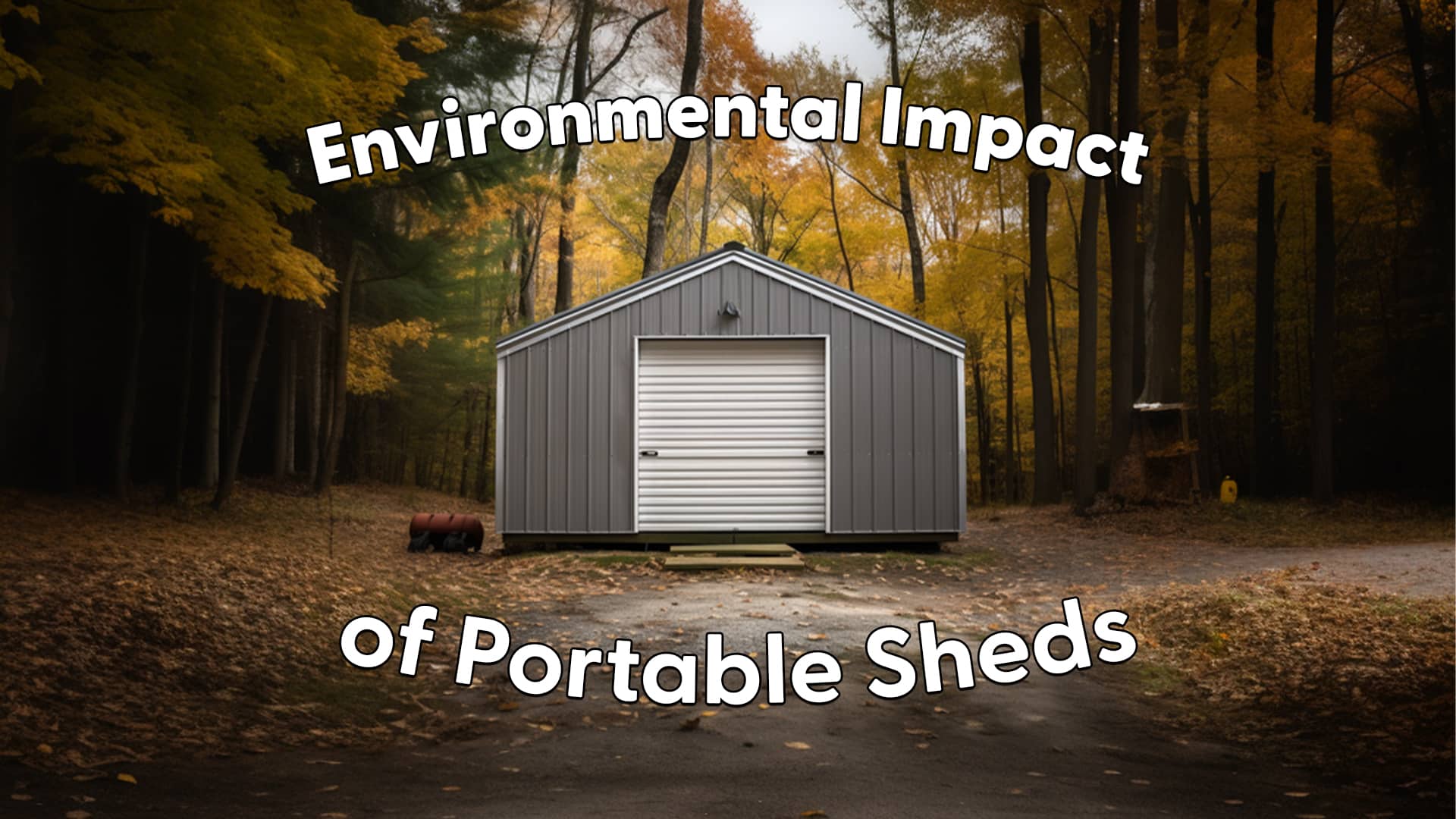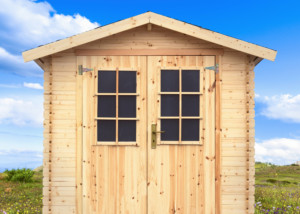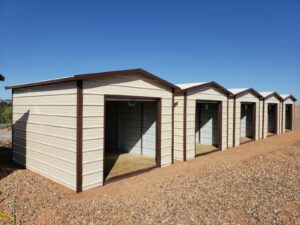For ages, buildings have been constructed using traditional methods, typically involving substantial waste, environmental pollution, and a significant carbon footprint. As environmental consciousness takes center stage, more people are looking into sustainable solutions that prioritize our planet’s well-being.
Historically, traditional construction has dominated the landscape. But as our knowledge grows about its environmental impact, there’s been a paradigm shift towards more eco-friendly construction. Traditional construction methods, while effective, are not always the most environmentally friendly. This has led to the rise of modular and Portable Sheds, which come with a host of environmental benefits.

The Present Case for Portable Sheds
When you think of buildings, traditional structures likely come to mind. However, the tide is turning, and there’s an increasing preference for portable buildings and modular design. One major reason is the many advantages these structures bring in terms of environmental benefits. With the environmental impact of traditional buildings becoming increasingly important to consider, portable sheds are quickly emerging as the ideal solution.
Another driving factor is the environmental benefits associated with the materials used in portable buildings. Unlike traditional construction, which can often involve the use of materials that aren’t particularly eco-friendly, portable buildings often utilize recycled materials, eco-friendly materials, and more durable materials. This not only reduces waste but also ensures a lower environmental impact.

Challenges with Traditional Construction
Despite its many benefits, traditional construction has been under scrutiny for its environmental implications. Construction sites, especially those that last for extended periods, can lead to a host of environmental issues. Waste from these sites often ends up in landfills, contributing to environmental pollution.
Moreover, the materials used in traditional buildings might not always be sourced sustainably. While there are eco-friendly options in traditional construction, they’re not as predominant as they are in the realm of modular and portable sheds. The construction process also requires more energy, leading to a higher carbon footprint compared to the energy-efficient methods used in portable building construction.

Embracing the Future with Modular and Portable Sheds
If we’re genuinely committed to reducing our environmental impact, portable sheds and modular buildings provide an excellent solution. They are constructed off-site, which minimizes disruptions to the local environment. With fewer construction site visits, there’s a reduced carbon footprint as fewer vehicles are needed for transportation.
Portable cabins and storage facilities constructed this way are not only cost-effective but are also a testament to quality control. They’re easily assembled and can be erected in much shorter time frames compared to permanent structures, saving both time and resources. This makes them an excellent option for emergency housing or temporary buildings required on short notice.

Considering Alternatives and Summing Up
Of course, no solution is without its criticisms. Some argue that while portable sheds might be more environmentally friendly, they may not offer the same durability as permanent structures. However, with advancements in technology and the use of highly insulated, durable materials, many of these concerns are becoming outdated.
The bottom line is that portable buildings offer numerous environmental benefits. From their construction using eco-friendly materials to their ability to be easily relocated, reducing waste, and ensuring efficient use of resources, they are an increasingly popular choice for those conscious of their impact on the environment.

Conclusion
As the world moves towards a more sustainable future, portable and modular buildings stand out as a beacon of hope. They are not just an economically viable option but also an environmentally responsible choice. Looking ahead, as our commitment to protecting our environment strengthens, the case for portable buildings will only become more compelling.

FAQ
What are the primary environmental benefits of portable buildings?
Portable buildings use eco-friendly materials, produce less waste, and are more energy efficient than many traditional construction methods.
How do modular and portable buildings reduce waste?
They often use recycled materials, reducing the need for raw resources, and produce less waste during construction.
Are portable buildings energy efficient?
Yes, modern portable buildings are designed to be energy efficient, with excellent insulation and green construction methods.
How does the construction of portable buildings differ from traditional buildings?
Portable buildings are often constructed off-site in controlled environments, leading to better quality control and fewer disruptions to local ecosystems.
Can portable buildings be used for office space or training rooms?
Absolutely! They’re a flexible option for various needs, from storage to office spaces and even training rooms.
Are the materials used in portable buildings durable?
Yes, modern portable buildings use durable materials, ensuring their longevity and resilience against various weather conditions.
Do portable buildings contribute to reducing carbon footprint?
By utilizing eco-friendly materials and producing less waste, portable buildings play a significant role in reducing carbon footprints.
How do portable buildings compare in terms of cost?
Portable buildings are often more cost-effective, especially when considering the reduced waste and efficient construction methods.
Is it easy to relocate a portable building?
One of the many advantages of portable buildings is that they can be easily relocated, making them a sustainable option for evolving needs.
Are portable buildings the future of construction?
Given their many benefits and increasing importance placed on eco-friendly solutions, portable buildings are definitely a significant part of the construction industry’s future.
This article provides insights into the environmental advantages of portable buildings. For a more comprehensive understanding of how these buildings are transforming Georgia, delve into the rise of portable buildings in the state. Similarly, if you’re weighing the financial aspects, don’t miss out on the article about the financial advantages of investing in portable buildings in Georgia.





